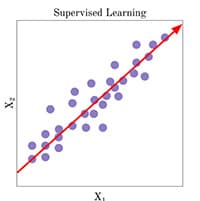
AI methods enabling computers to learn patterns and make predictions
Machine Learning (ML) & Deep Learning (DL) methods are utilized to develop algorithms that can learn from real world data. Supervised, semi-supervised and unsupervised learning methods are examined in ACTA to exploit various types of data and to tackle limitations such as data scarcity and noise. The ML and DL algorithms are utilized for prediction and decision-making and for a variety of applications.
The modern world generates massive amounts of data, on a daily basis, that can be exploited for various types of tasks. Machine Learning (ML) is a subfield of AI that employs systems with the ability to learn from data. The knowledge is then exploited for prediction and decision-making.
Supervised Learning

This learning aims to provide a pair of input-label in order to teach about the relationship between input and output. That kind of learning often involves expertise and manual labelling which are hard to acquire.
Unsupervised Learning

This method learns from unlabeled data and aims to discover patterns in the data without any prior information.
Reinforcement Learning

This learning method aims to teach an agent how to interact in its environment based on rewards and punishments about its decisions. This is a widely used method in robotic systems.
Deep learning is a subcategory of machine learning that utilizes forms of artificial neural networks to mimic the learning process of the human brain. Neural networks are composed of layers of interconnected nodes that process information sequentially. The number of layers indicates the depth of the model, which practically contributes to the complexity of the learned patterns. Deep learning algorithms can learn from both labeled and unlabeled data, and often require large amounts of data and computing power. Some examples of deep learning applications are computer vision, energy forecasting, anomaly detection, natural language processing, etc.